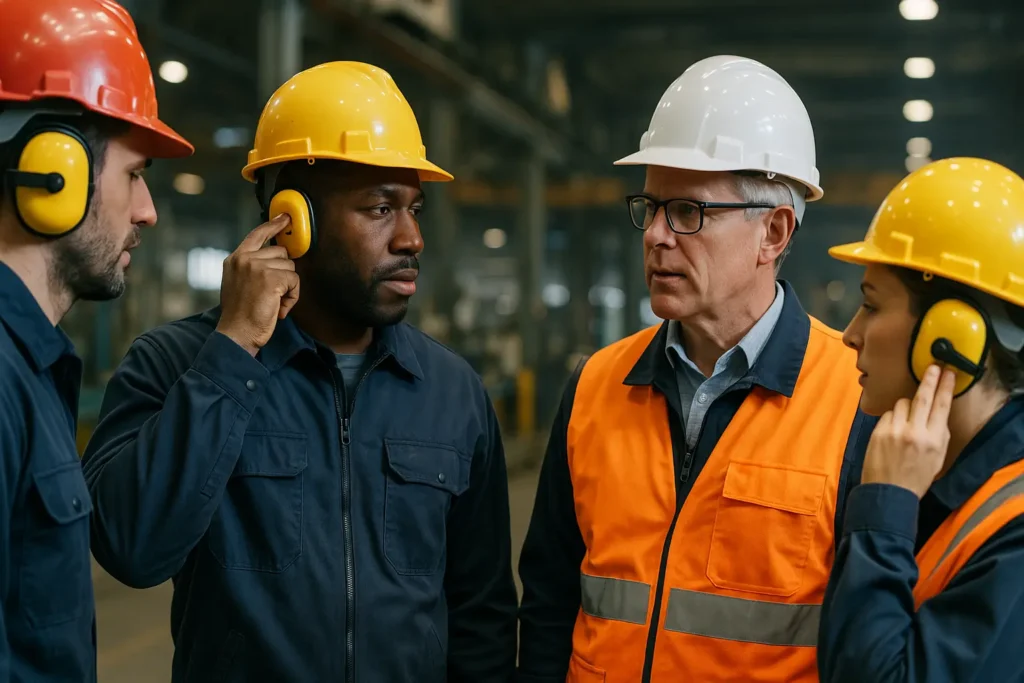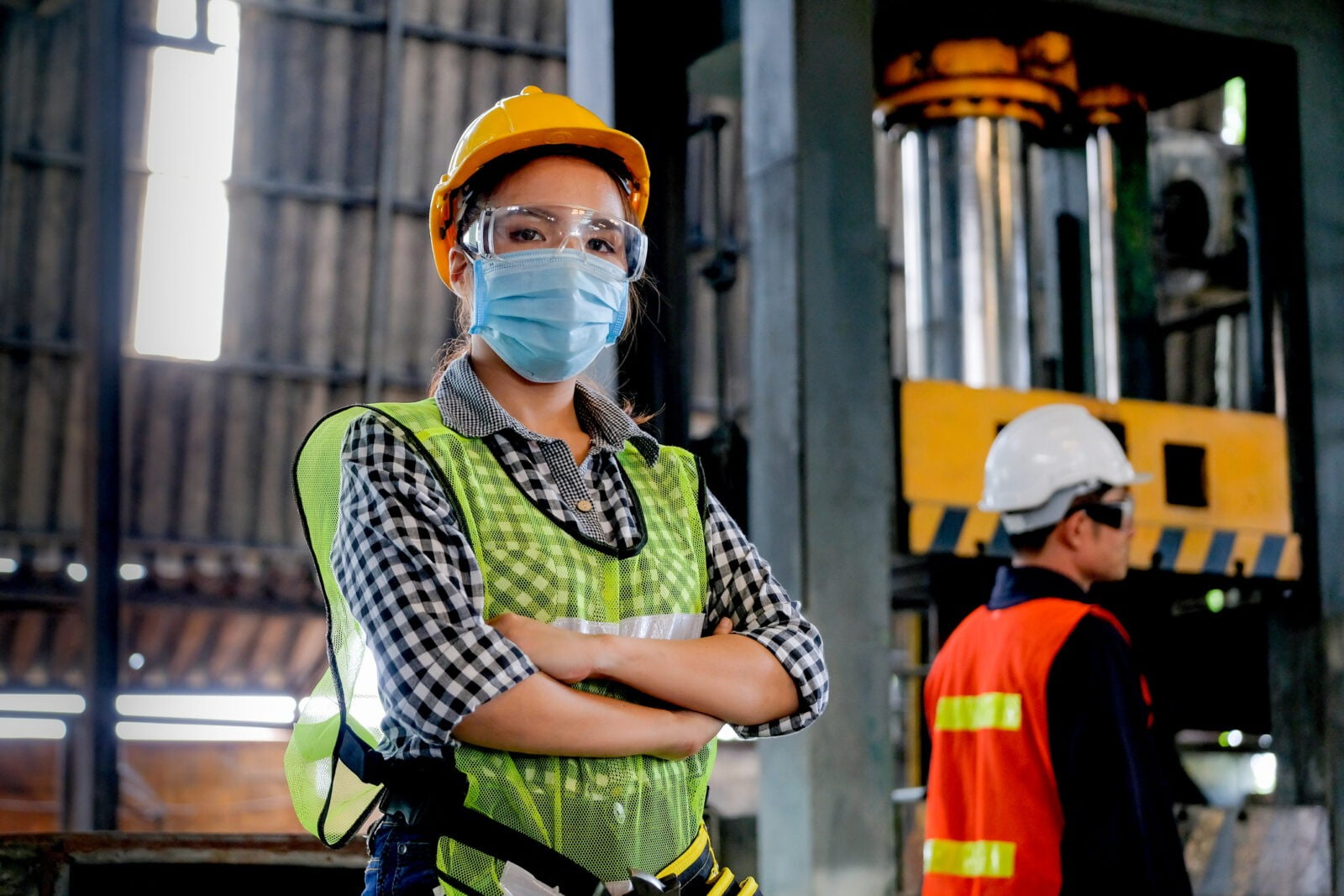Accidents vs. Incidents in the Workplace: How Do They Differ?
⚖️ Incidents vs. Accidents: A Critical Safety Distinction
In workplace safety, understanding the distinction between incidents and accidents isn’t just semantics it’s a foundational element of building a safer and more responsive environment.
While the terms are often used interchangeably, they describe two very different scenarios within occupational health and safety. Knowing how to properly categorize and respond to each is essential for effective risk management and prevention strategies.
In this article, we’ll explore the key differences between accidents and incidents and explain why this distinction plays a critical role in proactive safety planning.
Let’s jump in.
💥 What is an Accident?
An accident is an unplanned, unexpected event that results in harm whether it's physical injury, property damage, or both. Accidents are typically not anticipated and can vary in severity from minor slips to major chemical burns or equipment failures.
Common causes of workplace accidents include:
- ⚙️ Breakdown or failure of machines and equipment
- 📉 Inadequate training or improper work techniques
- 🔧 Misuse or lack of knowledge about equipment operation
- 🧑🏫 Insufficient supervision or poor managerial oversight
- 🏚️ Unfavorable or unsafe working conditions
- 🚫 Failure to follow established safety rules and protocols
Preventing accidents requires not only proper training and equipment maintenance but also cultivating a safety-first mindset across the organization.
⚠️ What is an Incident?
An incident is a specific, frequently remarkable event that occurs without warning and may call for notice, investigation, or action. Accidents, security breaches, interruptions, or other notable occurrences that have an impact on people, organizations, or systems can all be considered incidents. Incidents can also range greatly in type. However, an incident is a circumstance that might have led to an accident but didn’t.
For instance, a worker walking behind a forklift and a driver didn’t notice and turned around and reversed the car or an employee barely evaded being hit by a forklift. At the very last moment, the worker moved out of the forklift’s path to escape getting struck by it. Even though these instances tend to be harmless and minor, they may have extremely serious consequences in some instances.
🔍 Understanding Incidents vs Accidents Difference
For construction, manufacturing, and all safety-sensitive industries, clearly distinguishing between incidents and accidents is essential. The correct use of these terms improves communication, reporting accuracy, and preventive action.
Employers should ensure all staff understand these definitions so they can identify, report, and respond appropriately. Using the right terminology helps safety teams respond faster and build stronger prevention systems.
Below is a simplified breakdown of how incidents and accidents differ in purpose and outcome:
🆚 Accidents vs. Incidents: Key Differences
💥 Accidents
Accidents are unplanned, unexpected events that result in harm or damage to people, property, or the environment. These often involve injuries, equipment damage, or immediate danger.
- 🔴 Result in injuries, illnesses, or property damage
- 🔴 Caused by hazardous events or unsafe actions
- 🔴 Often have immediate and serious impacts
- 🔴 Preventable through safety measures and training
⚠️ Incidents
Incidents include a broader range of events such as near-misses where harm was avoided or minimal. These often indicate unsafe conditions or breakdowns in procedures that didn’t cause harm but could have.
- 🔵 May involve no injury but expose potential risks
- 🔵 Include near-misses and unsafe behaviors
- 🔵 Offer insight into system weaknesses
- 🔵 Serve as learning opportunities to improve safety
📋 Why Do You Need To Analyze And Record Accidents and Incidents?
Analyzing and documenting workplace accidents and incidents isn’t just a regulatory requirement it’s a powerful strategy for preventing future harm and enhancing workplace safety culture. Here are the top reasons why this practice matters:
- ✅ Identifies root causes: Understand exactly what went wrong and how to prevent it from recurring.
- ✅ Reveals patterns: Spot trends in unsafe behaviors, conditions, or processes over time.
- ✅ Improves training: Tailor safety programs based on real-world data and incident types.
- ✅ Supports legal compliance: Meet OSHA and regulatory reporting obligations to avoid penalties.
- ✅ Protects employees: Creates a safer work environment by correcting hazards and raising awareness.
- ✅ Strengthens company culture: Shows a clear commitment to health and safety, boosting morale and trust.
🛡️ 1. To Minimize Severe Damages
Recording and analyzing incidents allows organizations to identify hidden risks and recurring hazards within their operations. By understanding what went wrong or nearly went wrong they can develop effective mitigation strategies and implement safety protocols that prevent accidents from escalating into serious damage or harm.
📍 2. To Identify the Common Trouble Spots
Analyzing incident records reveals patterns and recurring issues within specific operations, departments, or processes. This data-driven approach helps organizations pinpoint common trouble spots, refine workflows, and apply targeted safety improvements that enhance both performance and protection.
📊 3. Help Organizations Compare Overtime Data
Tracking incidents over time allows organizations to evaluate trends and benchmark their safety performance. Comparing internal data month-to-month or year-over-year and against industry standards helps identify where they are improving, where they’re falling behind, and how effective their safety programs truly are.
📈 4. Help in Making Data-Driven Decision-Making
Incident records generate actionable insights that guide smarter decisions across departments. When safety strategies are based on real-world data, organizations can allocate resources effectively, improve training, and implement solutions that address actual risks leading to more impactful safety outcomes.
💰 5. Helps in Cost Reduction
Workplace accidents often lead to costly outcomes medical bills, equipment repairs, legal actions, and increased insurance premiums. By identifying patterns through incident analysis and implementing preventative strategies, organizations can minimize these financial risks and safeguard their bottom line.
🧩 6. Integrate Safety Measures
Incident and accident analysis uncovers root causes and systemic weaknesses that might otherwise go unnoticed. By learning from these events, organizations can proactively implement tailored safety improvements such as updated procedures, enhanced training, or new equipment creating a safer environment for all stakeholders.
📘 Why Does OSHA Use “Incident” Instead of “Accident”?
In OSHA’s guidelines and regulations, the definition of incident is “it used broadly to refer to any unexpected or unplanned event or exposure to a hazardous condition that results in, or has the potential to result in, injury, illness, damage to property, or other negative consequences”.
Another factor that contributes to OSHA’s preference for the word Incident is that when someone gets injured at work, it is a sensitive matter. Nobody wants to take the blame, but OSHA intends to have a constructive conversation to avoid the same thing happening again. A phrase like “incident” is a psychological white space.
According to OSHA, “Accident has such heavy baggage in normal conversation that they avoid it altogether. OSHA doesn’t want people to think of safety and health incidents as “nobody’s fault” or risk implying that an event isn’t serious”.
OSHA supports workplace safety in a number of significant ways. This includes creating and enforcing standards for safety and health at work, offering training to both employees and employers,conducting inspections to verify that safety standards are being followed. It also educates employers and staff members, and looks into and addressing complaints. They also play a key role in fostering an environment of safety in workplaces by offering tools and advice for spotting hazards, preventing them, and handling emergencies.
OSHA emphasizes the importance of incident reporting and recordkeeping to identify workplace hazards, assess their severity, and develop measures for preventing future incidents. Employers are required to maintain records of workplace incidents, and they may be required to report certain serious incidents to OSHA, depending on the nature of the incident and the industry.
🧾 Conclusion
While often used interchangeably, incidents and accidents are distinctly different. Understanding and communicating these differences is crucial for fostering a strong safety culture in any organization.
Recording and analyzing both is more than a compliance obligation it’s a proactive practice that reduces risks, prevents future harm, and supports continuous improvement across operations. These efforts protect not only your workforce but also your company’s integrity and long-term success.
To stay aligned with OSHA safety requirements and equip your team with practical knowledge, consider enrolling in foundational courses such as the OSHA 10-Hour Construction and OSHA 30-Hour Construction programs. These courses are invaluable resources for safety leadership and hazard awareness.
Related Posts

10 Holiday Safety Tips You Must Know for 2025

$99 OSHA 30 and $45 OSHA 10 Online Courses



